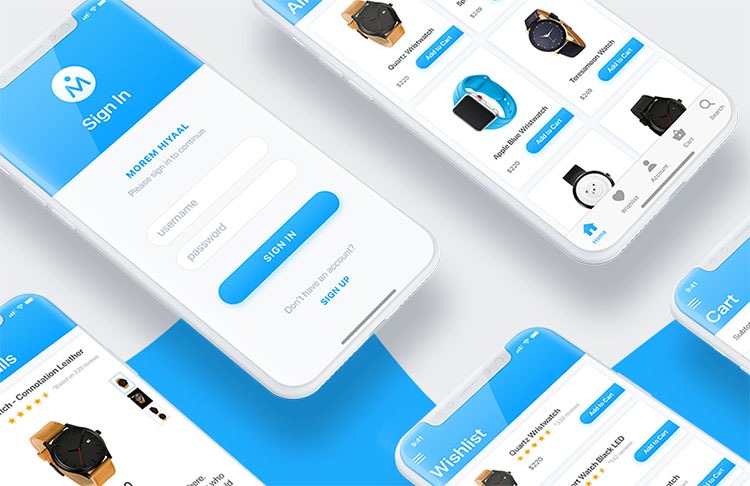In today’s digital age, having a strong online presence is crucial for businesses, especially those involved in ecommerce website development. With the increasing popularity of online shopping, it’s essential for ecommerce websites to not only attract customers but also provide them with a seamless and enjoyable shopping experience. To achieve this, here are 10 must-have features for any ecommerce site:
1. Responsive Design
In today’s digital age, people access websites using a variety of devices, including desktop computers, laptops, tablets, and smartphones. Responsive design is the practice of creating websites that adapt and display correctly on any screen size or device.
Importance of Responsive Design
With the increasing use of mobile devices for browsing the internet and shopping online, having a responsive website is essential. It ensures that your website looks great and functions properly regardless of the device used by the visitor.
Consistent User Experience
A responsive design provides a consistent user experience across different devices. Whether someone is viewing your website on a large desktop monitor or a small smartphone screen, they should be able to navigate and interact with your site easily.
Improved SEO Performance
Search engines like Google prioritize mobile-friendly websites in their search results. By having a responsive design, you improve your website’s chances of ranking higher in search engine results pages (SERPs) and reaching more potential customers.
Faster Loading Times
Responsive websites typically load faster on mobile devices compared to non-responsive ones. This is important because users expect websites to load quickly, especially on slower mobile connections.
Adaptation to Future Devices
As new devices with varying screen sizes and resolutions emerge, a responsive design ensures that your website remains compatible and accessible to users. It future-proofs your site against technological advancements.
2. User-Friendly Navigation
When it comes to navigating a website, simplicity is key. User-friendly navigation is all about making it easy for visitors to find what they’re looking for without getting lost or frustrated. Imagine walking into a well-organized store where everything is neatly labeled and arranged – that’s the kind of experience you want to create for your online visitors.
Clear Categories and Subcategories
Start by organizing your products into clear categories and subcategories. This helps users quickly locate the section they’re interested in and narrows down their search. For example, if you’re selling clothing, you might have categories like “Men’s,” “Women’s,” “Kids’,” and subcategories like “Tops,” “Bottoms,” “Accessories,” etc.
Intuitive Menu Structure
Your website’s menu structure should be intuitive and easy to understand. Use familiar terms and avoid jargon that might confuse users. Keep the main navigation menu visible and accessible from every page, preferably at the top of the screen or in a sidebar for mobile devices.
Search Functionality
Even with well-organized navigation, some users may prefer to search for specific products directly. Implement a search bar prominently on your website, allowing users to enter keywords and filter results.
3. Secure Payment Gateway
Security is paramount when it comes to online transactions. Integrating a secure payment gateway that encrypts sensitive information such as credit card details instills trust in customers and protects their data from potential cyber threats.
4. High-Quality Images and Product Videos
Visuals play a crucial role in influencing purchasing decisions. High-resolution images and product videos allow customers to get a closer look at products, examine details, and visualize how they would use them, ultimately leading to higher conversion rates.
5. Detailed Product Descriptions
Informative and compelling product descriptions provide customers with essential details about the product, its features, specifications, and benefits. Well-written descriptions help customers make informed decisions and reduce the likelihood of returns or dissatisfaction.
6. Customer Reviews and Ratings
Social proof, in the form of customer reviews and ratings, significantly influences buying behavior. Positive reviews build credibility and trust, while negative reviews provide valuable feedback for improvement. Encouraging customers to leave reviews can foster a sense of community and loyalty.
7. Search Functionality
An efficient search functionality allows users to quickly find specific products by entering keywords or using filters and sorting options. Implementing predictive search and autocomplete features can further enhance the search experience and help users discover relevant products faster.
8. Mobile Optimization
With the increasing number of mobile users, optimizing ecommerce websites for mobile devices is no longer optional but necessary. A mobile-friendly design ensures that the website looks and functions seamlessly on smartphones and tablets, catering to the growing segment of mobile shoppers.
9. Integration with Social Media
Integrating social media into ecommerce websites allows businesses to leverage platforms like Facebook, Instagram, and Pinterest to reach a wider audience, drive traffic, and increase sales. Social sharing buttons and social login options make it easy for customers to share products and login quickly.
10. Fast Loading Speed
In today’s fast-paced world, nobody likes to wait for a website to load. A fast-loading website not only improves user experience but also positively impacts SEO rankings. Optimizing images, minimizing HTTP requests, and using content delivery networks (CDNs) are some strategies to improve loading speed.
Conclusion
Incorporating these 10 must-have features into your ecommerce website can significantly enhance its performance, user experience, and ultimately, its success. From responsive web design company in Dubai and secure payment gateways to detailed product descriptions and fast loading speed, each feature plays a vital role in attracting and retaining customers in the competitive world of online shopping.
FAQs (Frequently Asked Questions)
- Why is responsive design important for ecommerce websites?
Responsive design ensures that websites look and function well on various devices, catering to the preferences of different users and maximizing accessibility.
- How can I encourage customers to leave reviews on my ecommerce site?
Offering incentives, sending follow-up emails, and making the review process quick and easy are effective ways to encourage customers to leave reviews.
- What are some security measures I can implement to protect customer data?
Implementing SSL certificates, using tokenization for payment processing, and regularly updating security software are essential security measures for ecommerce websites.
- Why is mobile optimization crucial for ecommerce success?
With the increasing number of mobile users, optimizing ecommerce websites for mobile devices ensures a seamless shopping experience and maximizes conversion rates.
- How can I improve the loading speed of my ecommerce website?
Optimizing images, reducing server response time, minifying CSS and JavaScript files, and leveraging browser caching are some effective strategies to improve website loading speed.



